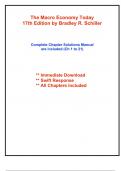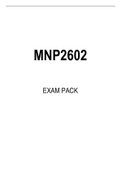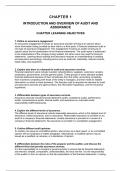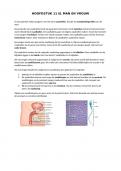Exam (elaborations)
Solutions for The Macroeconomy Today, 17th Edition Schiller (All Chapters included)
- Course
- Institution
Complete Solutions Manual for The Macroeconomy Today, 17th Edition by Bradley R. Schiller, Karen Gebhardt ; ISBN13: 9781265439903....(Full Chapters included Chapter 1 to 21)...Chapter 1: Economics: The Core Issues Chapter 2: The U.S. Economy: A Global View Chapter 3: Supply and Demand Chapte...
[Show more]








